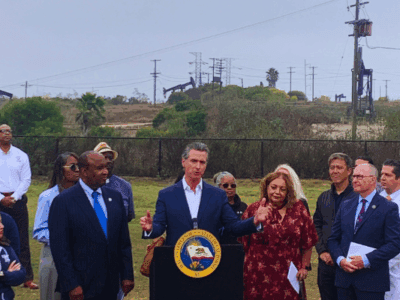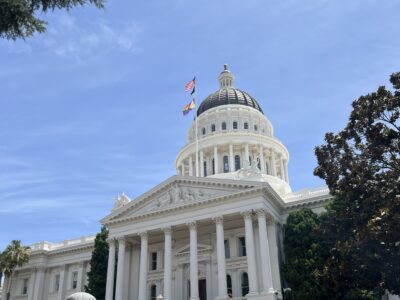U.S. Supreme Court Rules for Property Owners–Again
 Observers continue to await the third and most significant property rights case on the Supreme Court’s docket this Term–Koontz v. St. Johns River Water Management District–which should be released later this week. In the meantime, another property rights case was decided by the justices earlier this month that, while largely overlooked by the media, represents another significant Supreme Court win for property rights advocates–for reasons having nothing to do with the merits of the case.
Observers continue to await the third and most significant property rights case on the Supreme Court’s docket this Term–Koontz v. St. Johns River Water Management District–which should be released later this week. In the meantime, another property rights case was decided by the justices earlier this month that, while largely overlooked by the media, represents another significant Supreme Court win for property rights advocates–for reasons having nothing to do with the merits of the case.
Horne v. Department of Agriculture involved a Takings Clause claim that California raisin farmers brought against the U.S. Department of Agriculture. The subject of their ire was a U.S.D.A.-enforced system of raisin marketing orders, first enacted in the Depression era but still in force today, designed to stabilize raisin prices. (Whether these types of federal marketing/price support systems make economic or policy sense in the 21st century is an important topic, albeit one beyond the scope of this post.) The Hornes’ constitutional grievance was predicated on the undisputed fact that the U.S.D.A. marketing order required them and similarly situated raisin growers to turn over a portion of their crop to the federal government, without receiving any compensation in return.
The Ninth Circuit Court of Appeals never reached the merits of the Hornes’ claim, finding that their lawsuit had to be filed in a specialized federal tribunal in Washington, D.C.–the U.S. Court of Federal Claims–under the Tucker Act. In a unanimous decision this month, the Supreme Court disagreed. The justices held that the Ninth Circuit Court of Appeals had erred in finding that the Hornes’ takings lawsuit couldn’t be pursued in federal district court in California.
Superficially, then, Horne v. Department of Agriculture appears to be a simple and technical case of federal civil procedure. But a closer look at the Supreme Court opinion reveals two important features of the decision that militate strongly in favor of future, successful property rights claimants.
First, Horne builds upon another Supreme Court environmental enforcement decision from a year ago: Sackett v. USEPA. In Sackett, the justices unanimously held that a property owner could bring a pre-enforcement judicial challenge to an EPA administrative order threatening civil fines, even before federal regulators went to court themselves to enforce that order. In the Horne case, the justices similarly–and, again, unanimously–ruled that the raisin farmers could press their takings claim against the government in federal district court, and did not need to first pay administrative fines to the Department of Agriculture and only thereafter pursue a claim for reimbursement in the Court of Federal Claims. The ability of members of the regulated community to short-circuit government’s administrative enforcement orders by going to court to challenge those orders’ statutory or constitutional basis is likely to make a wide array of federal administrative enforcement actions that much more difficult for the government to pursue successfully.
A second and related victory for the Hornes relates to the aspect of regulatory takings law known as the ripeness doctrine. Created pretty much out of whole cloth by the Supreme Court in a series of regulatory takings opinions in the 1980’s, the ripeness doctrine provides that a property owner may not pursue a takings claim on the merits until and unless s/he has first: 1) obtained a final government decision on the applicability of the relevant regulation to the property at issue; and 2) availed him or herself of compensation remedies made available by government regulators. In subsequent decades, lower state and federal courts have applied this two-part ripeness test to dismiss many takings lawsuits without reaching the merits of property owners’ constitutional claims. More recently, however, the Supreme Court has expressed misgivings about its ripeness rule, with some justices musing in concurring and dissenting opinions that the doctrine should be narrowed or abandoned.
Which brings us back to the Supreme Court’s recent decision in Horne. As a fallback argument, the Solicitor General asserted that even if the Hornes had brought suit in the proper federal court, their takings claim was properly dismissed as not ripe for adjudication on the merits. Justice Clarence Thomas’ opinion for the Court rejected the S.G.’s ripeness argument out of hand. After first reiterating a position first articulated in a 2010 regulatory takings case that the Supreme Court’s ripeness rule “is not, strictly speaking, jurisdictional”, Horne interprets the two-part ripeness rule quite narrowly, finding that the Hornes’ taking claim to be ripe for resolution on the merits
Horne v. Department of Agriculture thus represents a setback to government regulators defending administrative enforcement and regulatory takings claims. In holding that members of the regulated community can go to court to challenge administrative enforcement orders before they are final, and by narrowing regulatory takings law’s ripeness rule, the Supreme Court continues to demonstrate solicitude for property owners, and skepticism toward a growing array of government regulatory programs challenged under the Takings Clause.
Reader Comments
One Reply to “U.S. Supreme Court Rules for Property Owners–Again”
Comments are closed.







Reblogged this on Brew City Royalties Investment Club.